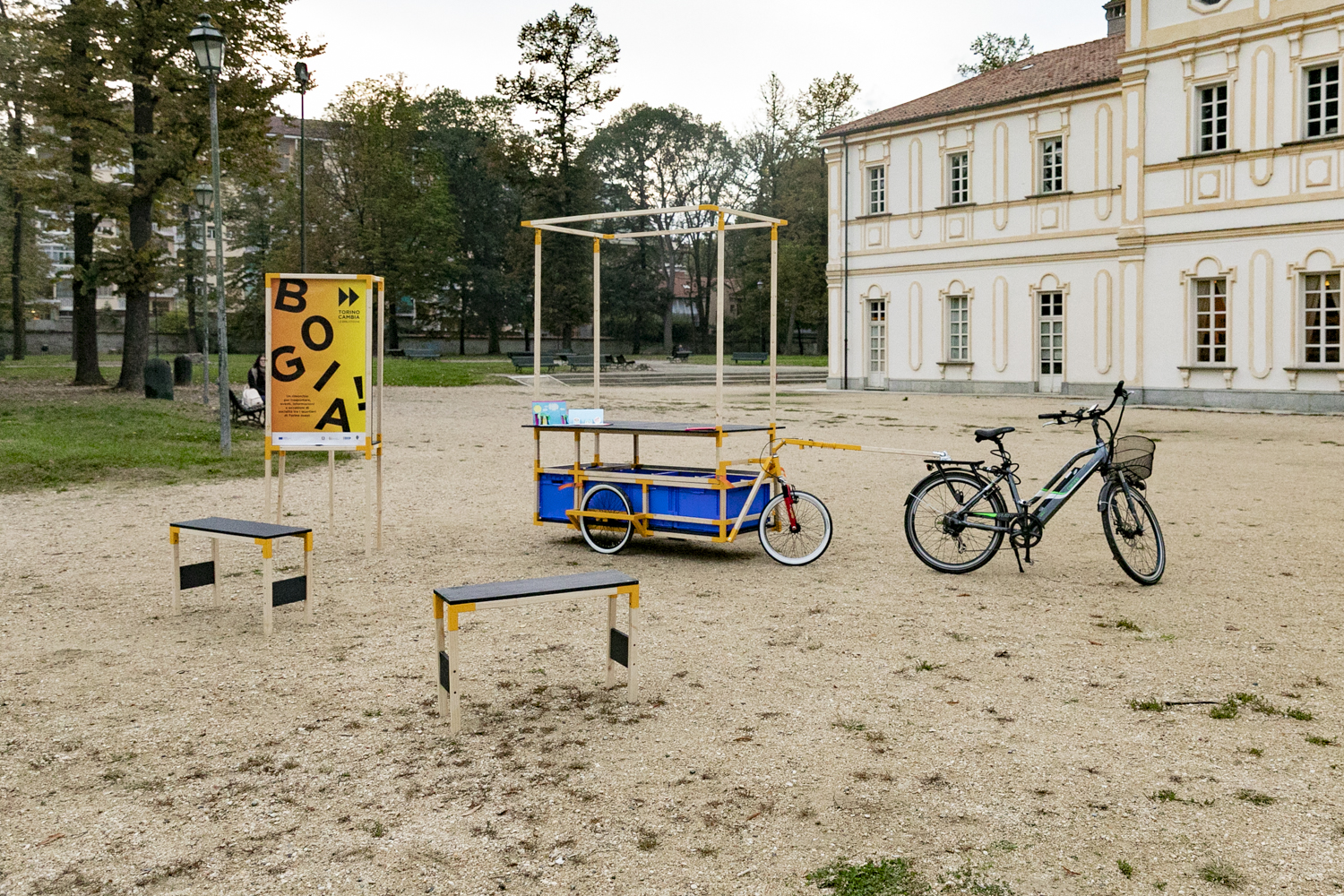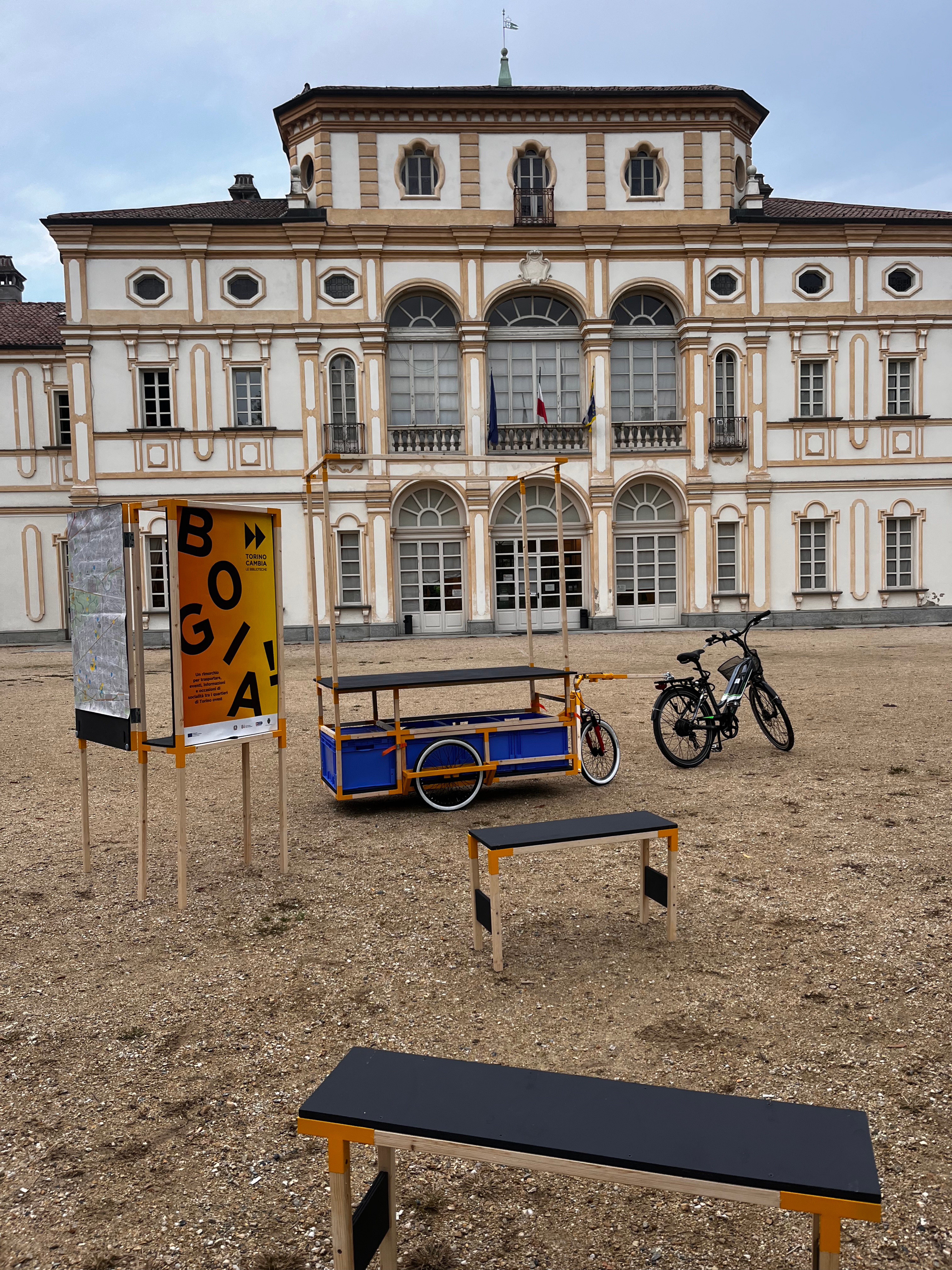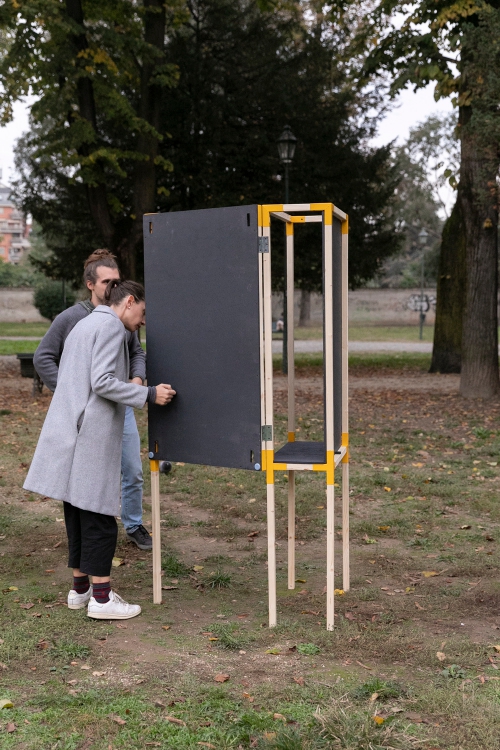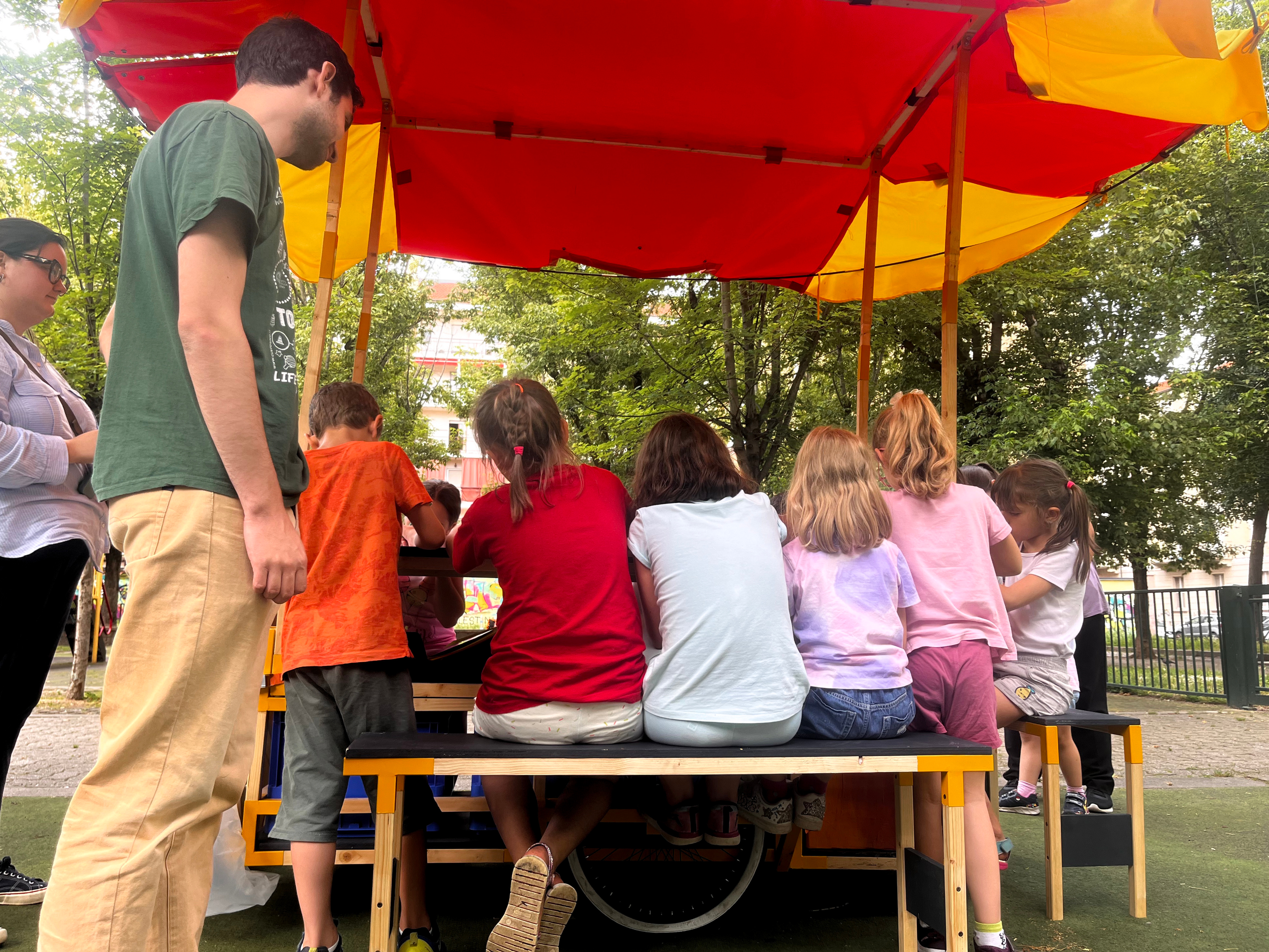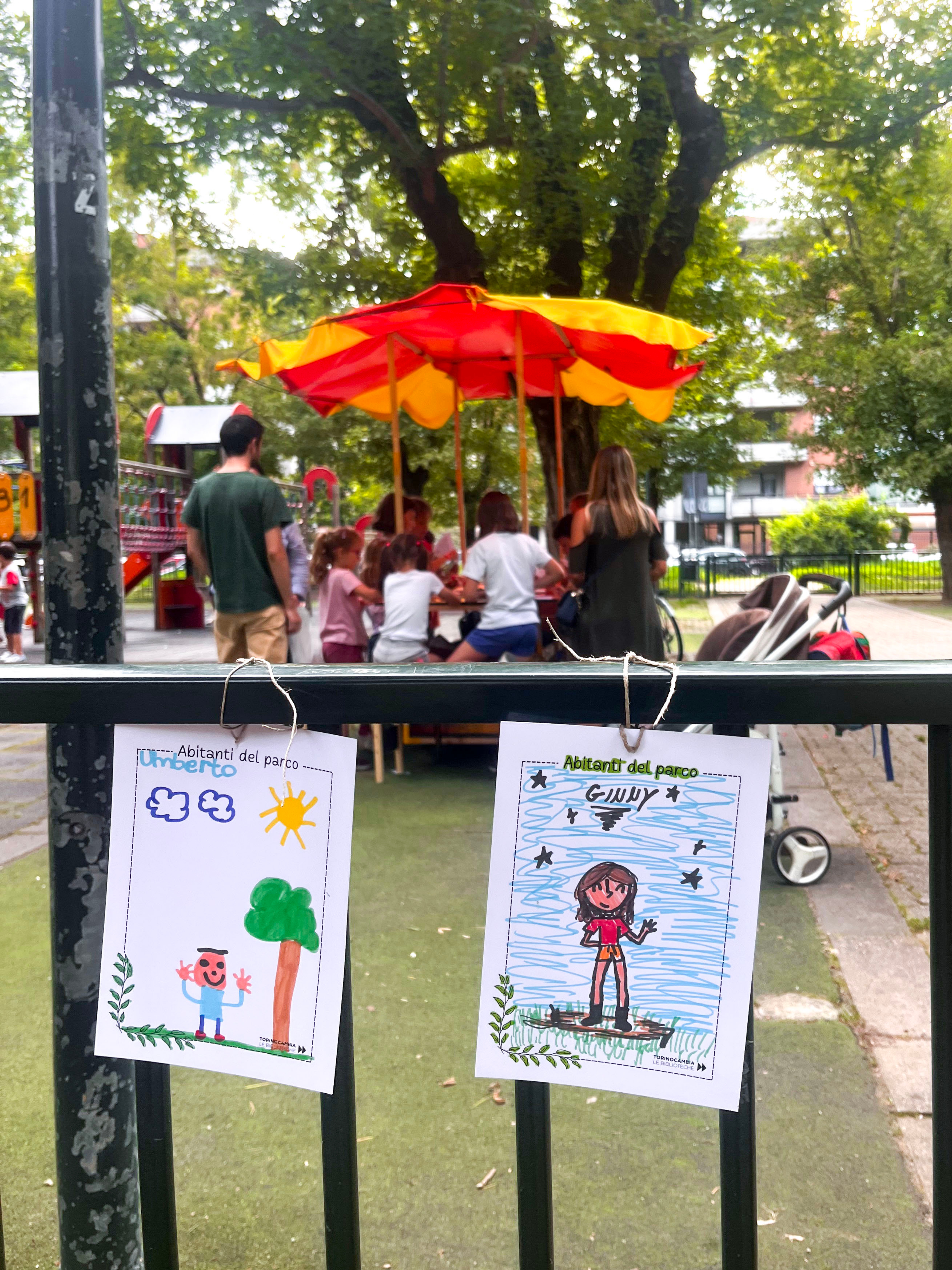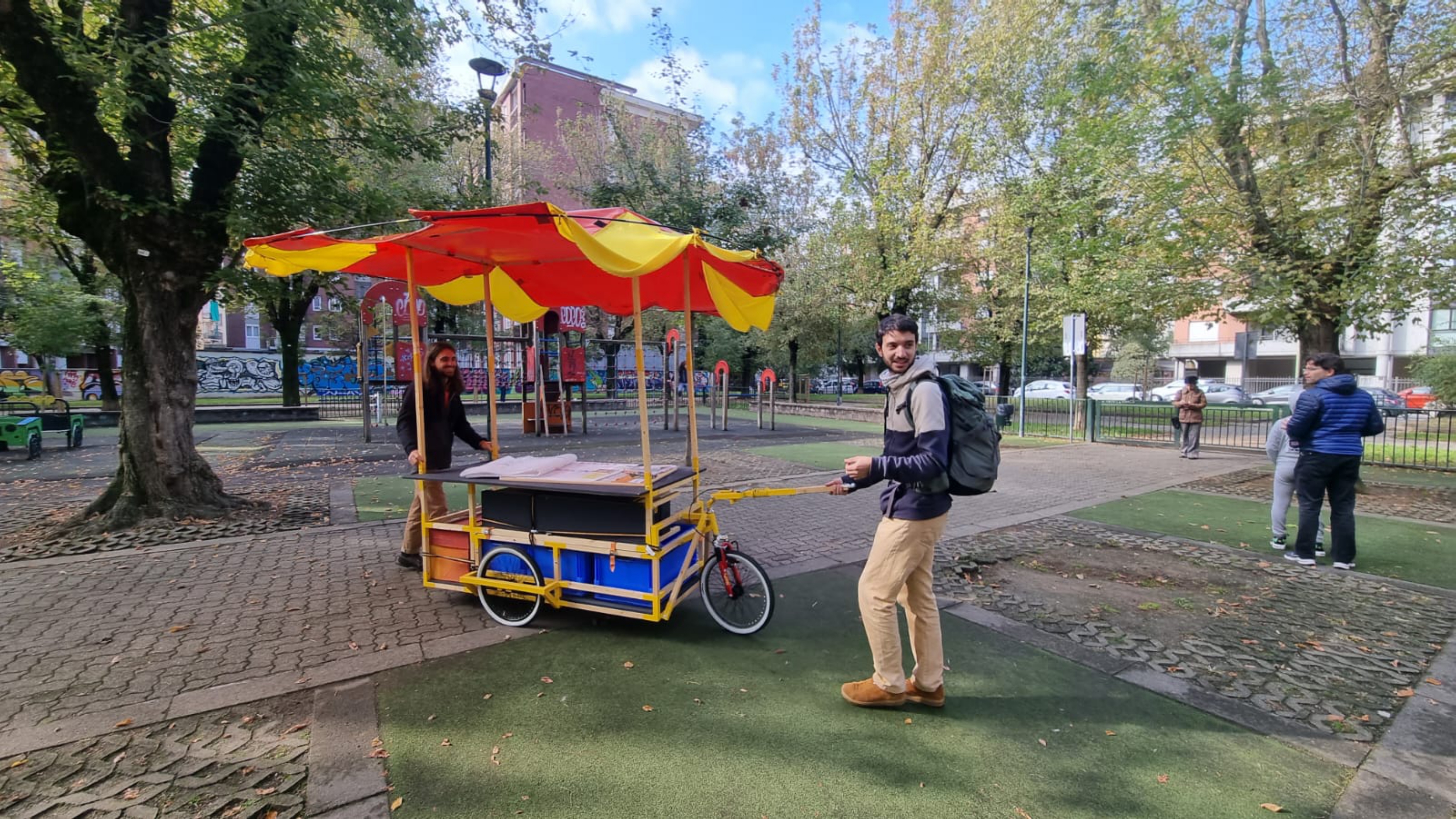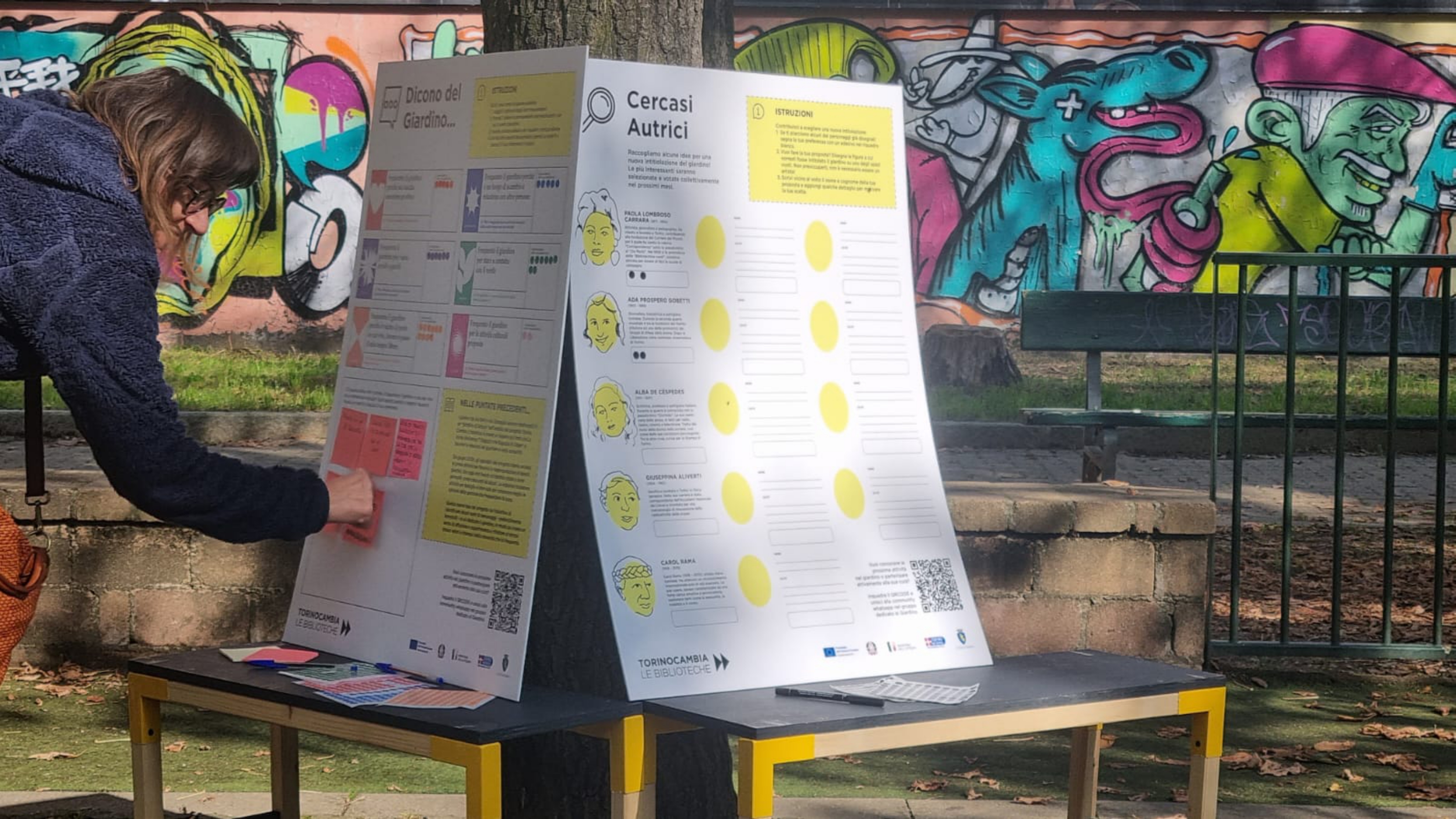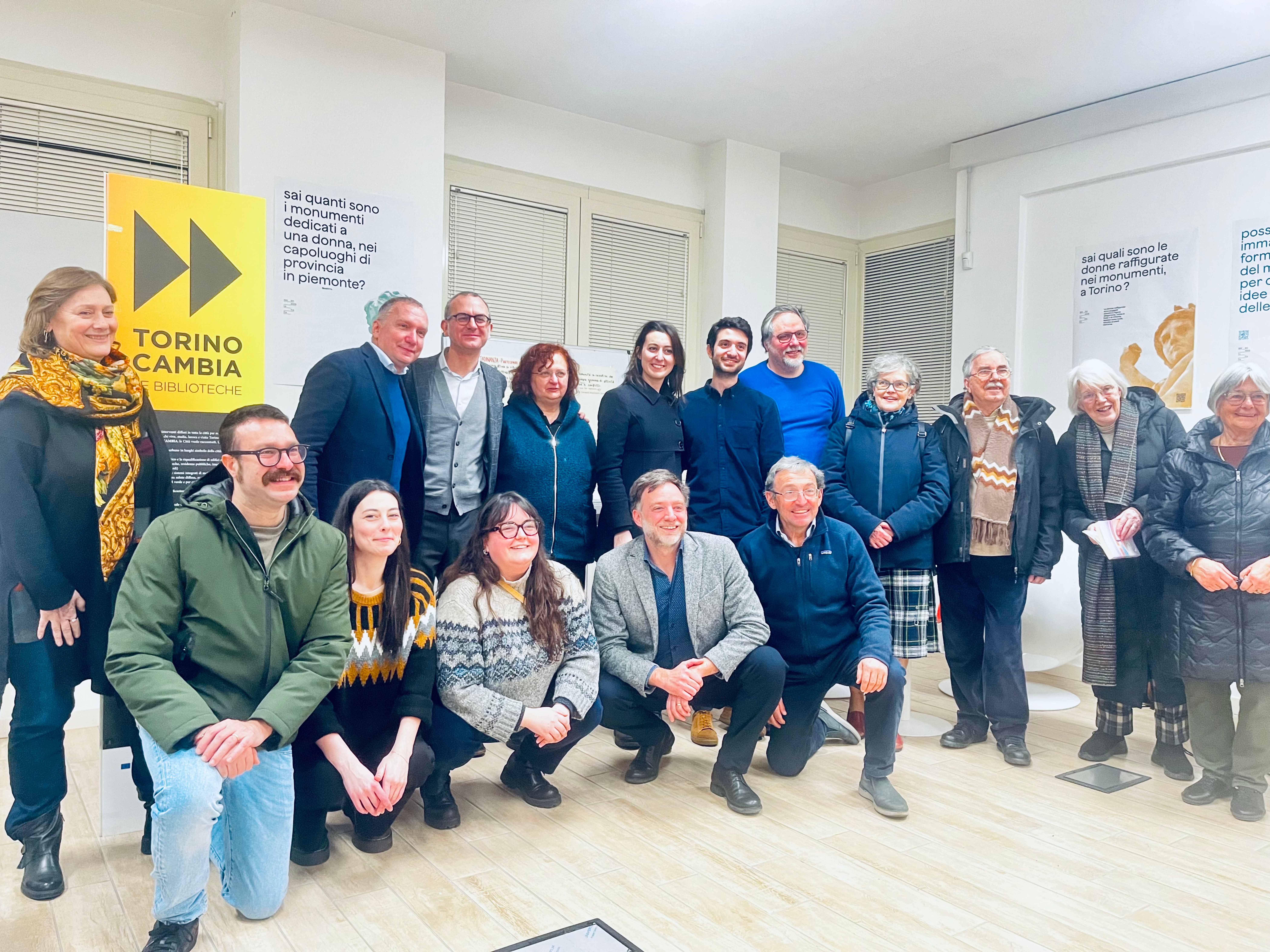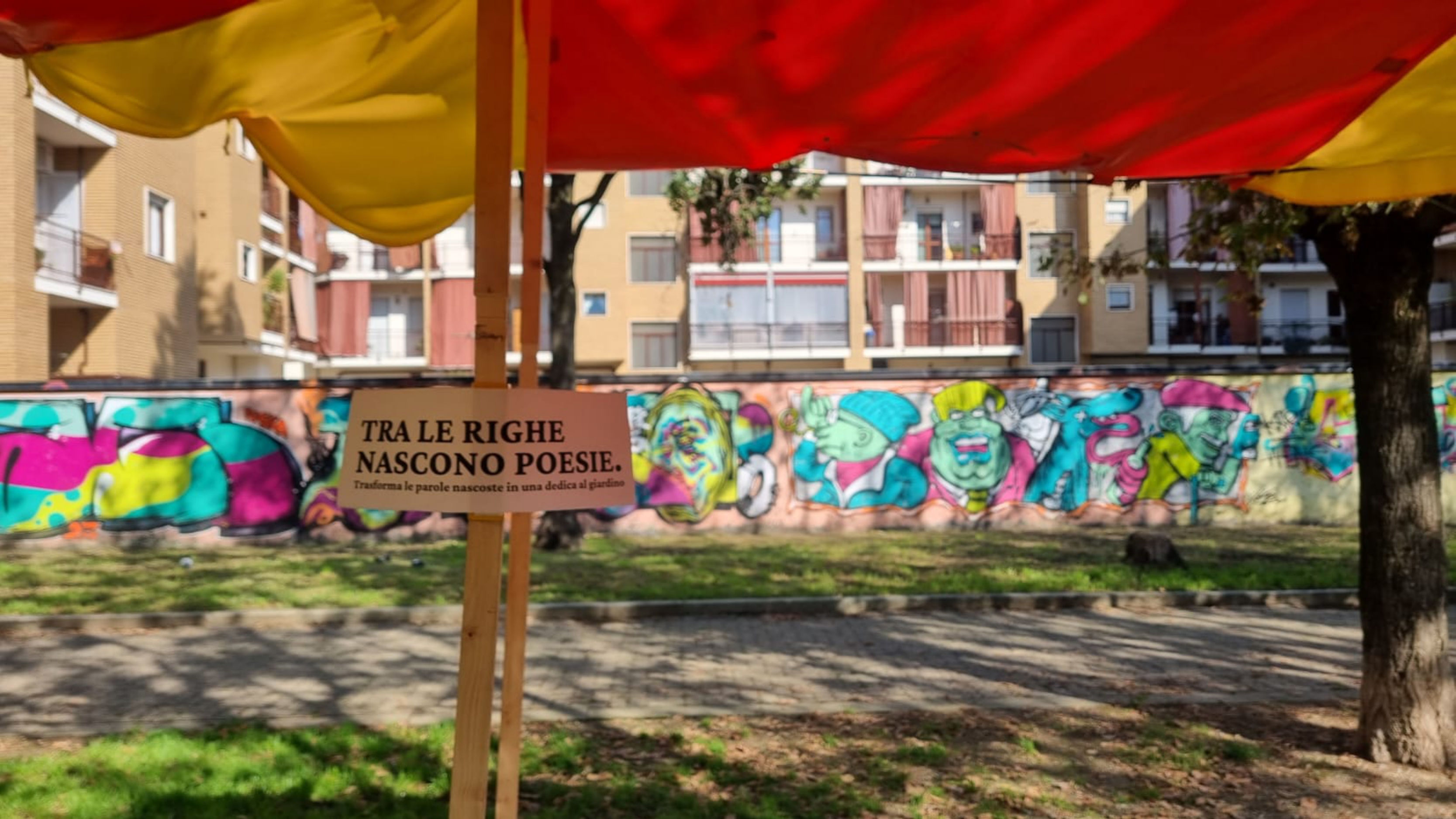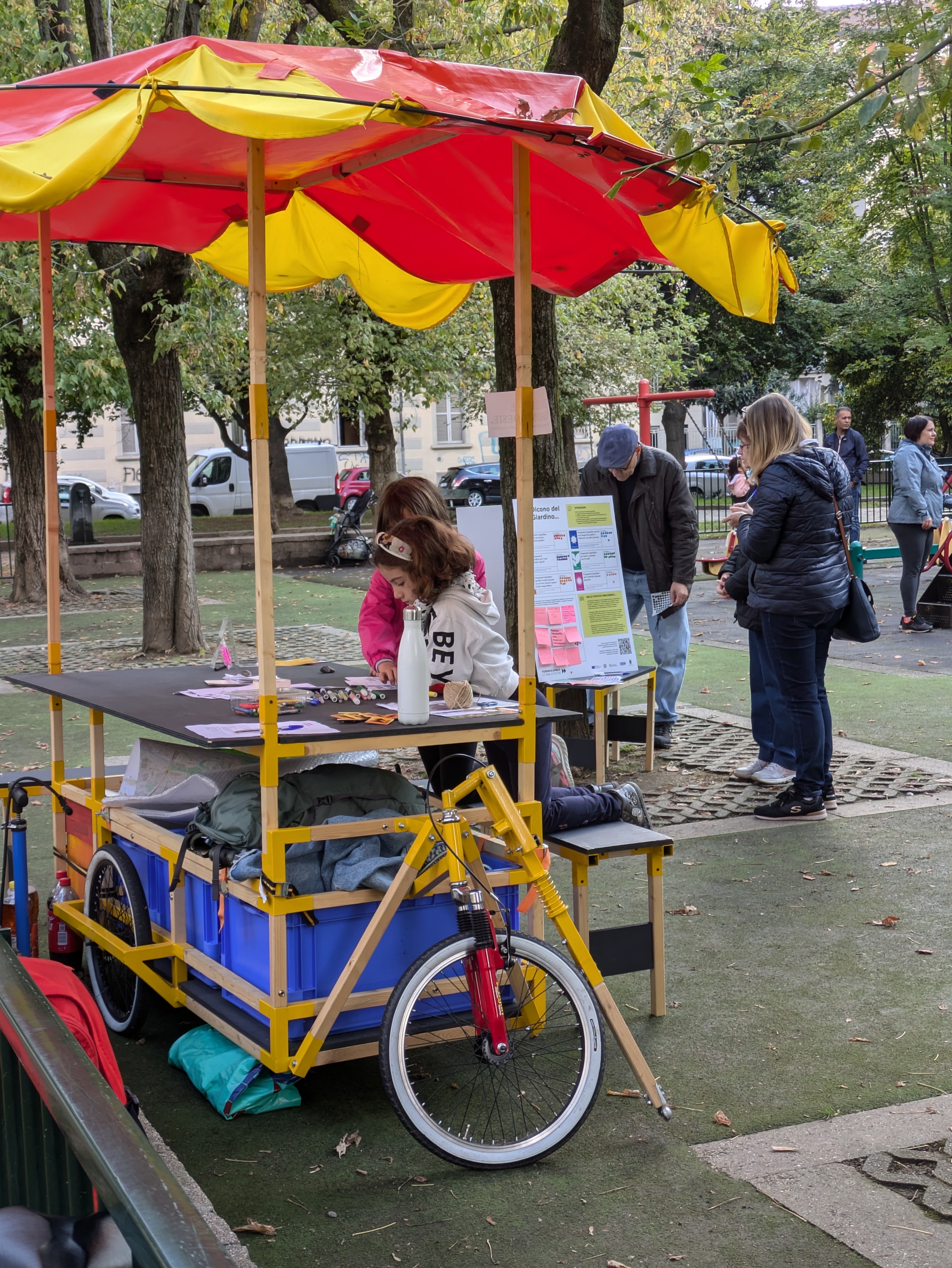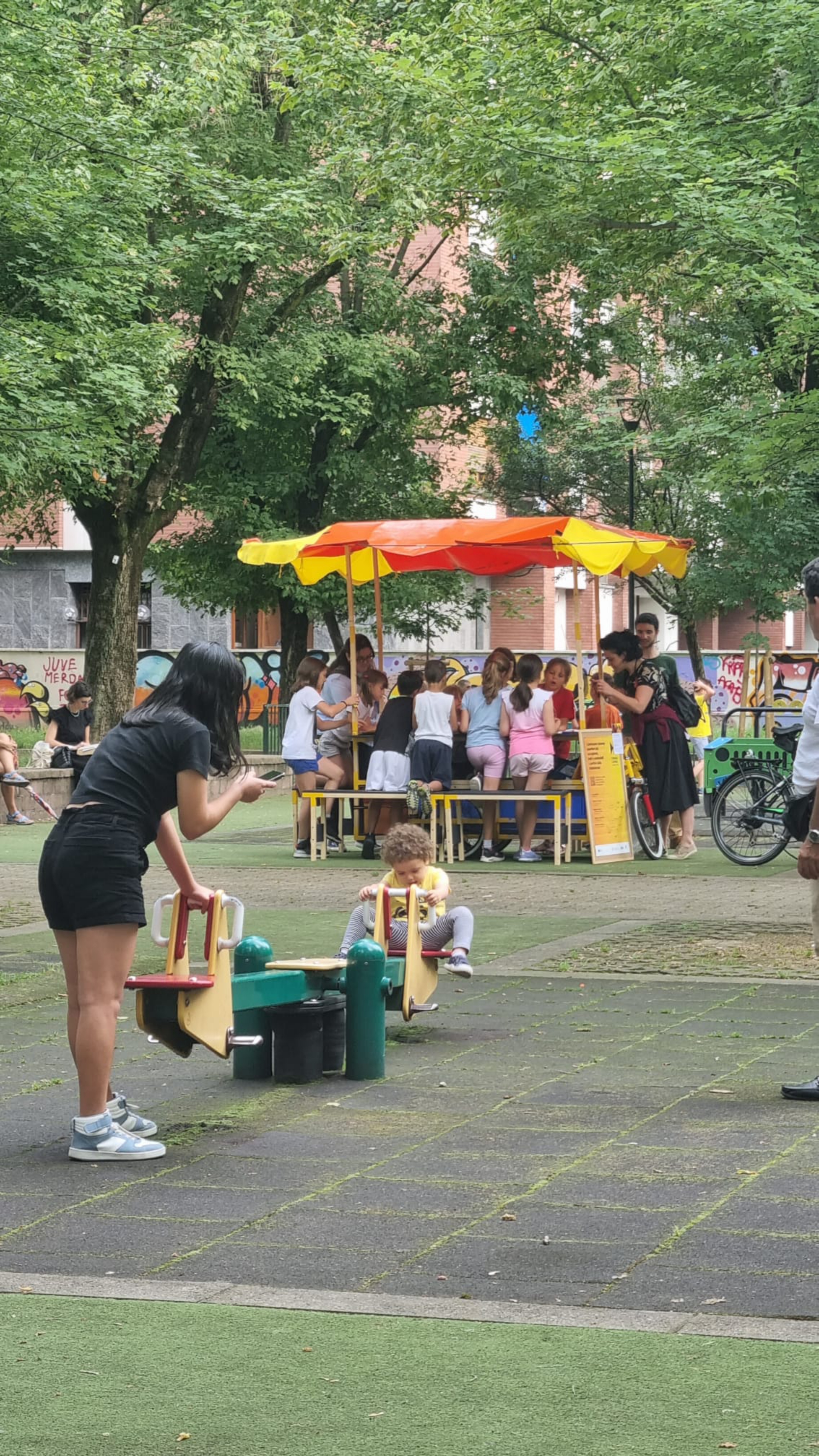Regaining a sense of belonging
Bögia – Muoviti!
{Empty}
Bögia – Muoviti! is a modular and flexible bike trailer that strengthens the sense of belonging by transforming everyday public spaces into dynamic hubs of encounter, exchange, and collective storytelling. Designed through co-creation, it reimagines underutilized areas, reconnecting them with local history, traditions, and contemporary community life. By bringing culture directly to neighborhoods, Bögia fosters shared ownership of spaces, celebrating diversity and weaving new social bonds.
Italy
Local
Turin
Mainly urban
It refers to other types of transformations (soft investment)
Yes
2025-02-20
Yes
PNRR
No
No
As a representative of an organisation, in partnership with other organisations
Bögia – Muoviti! is a modular and flexible bike trailer that strengthens the sense of belonging by transforming everyday public spaces into dynamic hubs of encounter, exchange, and collective storytelling. Designed through co-creation, it reimagines underutilized areas, reconnecting them with local history, traditions, and contemporary community life. By bringing culture directly to neighborhoods, Bögia fosters shared ownership of spaces, celebrating diversity and weaving new social bonds.
Co-design
Democratization (of culture)
Belonging
Empowering
Versatility
Bögia is a bike trailer towed by an e-bike, offering a zero-emission mobility solution that integrates cultural activation with environmental responsibility. It aligns with the NEB’s ambitions of repurposing and regenerating, demonstrating how mobility can serve as a tool for urban sustainability and social engagement.
Bögia minimizes its footprint through both construction and operation. Built with reclaimed and recycled materials, it prioritizes circular economy principles, while its energy-efficient design ensures low-impact functionality. By reducing dependence on motorized vehicles, it contributes to cleaner air, lower noise pollution, and a healthier urban environment—critical in a city like Turin, where air quality remains a pressing public health challenge. It supports the municipality’s Climate City Contract, fostering community-driven innovations for a net-zero future.
Bögia drives urban regeneration by transforming soft mobility into a tool for reimagining public space. More than a sustainable alternative to transport, it actively reshapes underutilized areas—parks, squares, and pedestrian zones—fostering new interactions and participatory placemaking.
It enhances social sustainability by strengthening local networks. Its modular and adaptable design eliminates the need for permanent structures, allowing it to respond dynamically to the evolving needs of spaces and communities.
Economically, its collective use model optimizes resources, supporting a wide range of activities and fostering collaboration to maximize impact. This approach promotes a circular economy, ensuring long-term sustainability and financial viability.
Culturally, Bögia’s strength lies in its adaptability and replicability. By merging sustainable mobility with cultural activation, it becomes a flexible tool for urban and social transformation, easily reinterpreted in different contexts to foster local creativity and engagement.
Bögia minimizes its footprint through both construction and operation. Built with reclaimed and recycled materials, it prioritizes circular economy principles, while its energy-efficient design ensures low-impact functionality. By reducing dependence on motorized vehicles, it contributes to cleaner air, lower noise pollution, and a healthier urban environment—critical in a city like Turin, where air quality remains a pressing public health challenge. It supports the municipality’s Climate City Contract, fostering community-driven innovations for a net-zero future.
Bögia drives urban regeneration by transforming soft mobility into a tool for reimagining public space. More than a sustainable alternative to transport, it actively reshapes underutilized areas—parks, squares, and pedestrian zones—fostering new interactions and participatory placemaking.
It enhances social sustainability by strengthening local networks. Its modular and adaptable design eliminates the need for permanent structures, allowing it to respond dynamically to the evolving needs of spaces and communities.
Economically, its collective use model optimizes resources, supporting a wide range of activities and fostering collaboration to maximize impact. This approach promotes a circular economy, ensuring long-term sustainability and financial viability.
Culturally, Bögia’s strength lies in its adaptability and replicability. By merging sustainable mobility with cultural activation, it becomes a flexible tool for urban and social transformation, easily reinterpreted in different contexts to foster local creativity and engagement.
Bögia is designed around aesthetics, quality of experience, and cultural engagement, embodying adaptability, inclusivity, and urban activation. Bögia’s design goes beyond being just an object; it fosters a sense of collective ownership by connecting people to the urban space —through the design, sensory engagement, and active participation—, transforming their relationship with it, and turning public areas into dynamic environments for shared experiences and creativity. It acts as an activator of experiences that enrich the environment. Its lightweight and modular design creates an inviting presence, encouraging spontaneous engagement. The very structure of Bögia is intentionally “ambiguous” — its form is not immediately recognizable, evoking wonder. This element of the unexpected sparks curiosity and interaction, inviting passersby to explore its purpose and become part of the creative dialogue it fosters.
It reflects real social needs—functioning as a storytelling hub for children, a civic engagement platform, or a shared tool for local organizations. Its presence - bringing reading sessions, workshops, and discussions to peripheral green areas and squares - turns everyday spaces into gathering points, strengthening social cohesion and encouraging new forms of cultural participation. Positioned in green areas and peripheral neighborhoods, it encourages a broader sense of ‘us’ that includes the non-human world.
Plein-air readings and creative activities are great instruments to foster ownership for public spaces and to inspire communities to imagine and shape their environment. Evidence of this is the experience of “I mercoledì ai giardini” (Wednesdays at the Gardens), a series of creative workshops organized in the peripheral neighborhood of Parella, where Bögia transformed a garden into a creative place in which children could express their perceptions and desires of that particular green area with a personal manifesto.
It reflects real social needs—functioning as a storytelling hub for children, a civic engagement platform, or a shared tool for local organizations. Its presence - bringing reading sessions, workshops, and discussions to peripheral green areas and squares - turns everyday spaces into gathering points, strengthening social cohesion and encouraging new forms of cultural participation. Positioned in green areas and peripheral neighborhoods, it encourages a broader sense of ‘us’ that includes the non-human world.
Plein-air readings and creative activities are great instruments to foster ownership for public spaces and to inspire communities to imagine and shape their environment. Evidence of this is the experience of “I mercoledì ai giardini” (Wednesdays at the Gardens), a series of creative workshops organized in the peripheral neighborhood of Parella, where Bögia transformed a garden into a creative place in which children could express their perceptions and desires of that particular green area with a personal manifesto.
Bögia is a participatory project rooted in inclusion, accessibility, and shared governance. Designed as a modular and flexible bike trailer, it functions as an open resource available to organizations and community groups, evolving with the city’s needs. Its electric assistance system ensures that individuals of varying physical abilities can use it, promoting active mobility without exclusion. By reaching underserved areas, Bögia expands access to culture and civic engagement, fostering spontaneous interaction and reducing barriers to participation.
Beyond physical accessibility, Bögia embodies the principle of affordability and gratuitousness: the cultural experiences it enables are always free, eliminating financial obstacles and ensuring universal access. This approach reinforces new societal models based on collaboration and shared resources, allowing grassroots organizations and institutions to collectively manage and shape the project. A key example is the bottom-up process initiated in October 2024 in the Parella neighborhood, where Bögia facilitated the renaming of a local garden. Through a participatory process involving the public library, associations, residents, and administrators, the community selected a name inspired by female local artists, writers, and scholars—demonstrating how inclusive governance can reclaim and redefine public spaces.
Bögia also fosters intergenerational connections, bringing together diverse age groups and cultures, including children, adolescents, elderly women, and migrant families. Its flexible design transforms public spaces into inclusive environments for cultural exchange, strengthening community cohesion and offering a replicable model of inclusive urban activation.
Beyond physical accessibility, Bögia embodies the principle of affordability and gratuitousness: the cultural experiences it enables are always free, eliminating financial obstacles and ensuring universal access. This approach reinforces new societal models based on collaboration and shared resources, allowing grassroots organizations and institutions to collectively manage and shape the project. A key example is the bottom-up process initiated in October 2024 in the Parella neighborhood, where Bögia facilitated the renaming of a local garden. Through a participatory process involving the public library, associations, residents, and administrators, the community selected a name inspired by female local artists, writers, and scholars—demonstrating how inclusive governance can reclaim and redefine public spaces.
Bögia also fosters intergenerational connections, bringing together diverse age groups and cultures, including children, adolescents, elderly women, and migrant families. Its flexible design transforms public spaces into inclusive environments for cultural exchange, strengthening community cohesion and offering a replicable model of inclusive urban activation.
Bögia was developed through an open and participatory process, ensuring that citizens and civil society actively shaped both its design and implementation. From the outset, the project engaged diverse local actors: an October 9, 2023, workshop with 15 associations and cultural groups identified key priorities—social spaces, improved communication, and cultural activities—while a creative session with 20 children ensured younger voices influenced Bögia’s functions.
At the end of October 2023, a week-long construction phase at Biblioteca Carluccio brought together 100 university students, local citizens, and the project team under the guidance of Patrick Hubmann. The process reinforced a sense of ownership and flexibility. Its core functions—aggregation (benches), information (notice board), and multi-activity (modular boxes)—were directly shaped by participants.
Beyond its development, Bögia continuously promotes participatory engagement in public spaces. A key example is the participatory renaming of Giardini di Via Zumaglia in October 2024, where residents were invited to write down name suggestions and ideas for the garden on a participative device, engaging around 50 people on-site. This moment of direct engagement catalyzed a broader participatory effort, leading to more than 200 responses in an online survey (60% from locals) showing how Bögia's presence can spark long-term civic involvement.
The impact was solid and tangible, reinforcing a sense of belonging and encouraging shared responsibility for the space. The initiative culminated in a February 2025 public event at the library, where 40 participants celebrated the official naming of Ada Gobetti Garden and discussed future co-governance models.
Through bookcrossing, dialogue spaces for the elderly, play activities for children, and ongoing collaboration with local actors, Bögia fosters stronger community ties, shared responsibility for public spaces, and new cultural and social interactions.
At the end of October 2023, a week-long construction phase at Biblioteca Carluccio brought together 100 university students, local citizens, and the project team under the guidance of Patrick Hubmann. The process reinforced a sense of ownership and flexibility. Its core functions—aggregation (benches), information (notice board), and multi-activity (modular boxes)—were directly shaped by participants.
Beyond its development, Bögia continuously promotes participatory engagement in public spaces. A key example is the participatory renaming of Giardini di Via Zumaglia in October 2024, where residents were invited to write down name suggestions and ideas for the garden on a participative device, engaging around 50 people on-site. This moment of direct engagement catalyzed a broader participatory effort, leading to more than 200 responses in an online survey (60% from locals) showing how Bögia's presence can spark long-term civic involvement.
The impact was solid and tangible, reinforcing a sense of belonging and encouraging shared responsibility for the space. The initiative culminated in a February 2025 public event at the library, where 40 participants celebrated the official naming of Ada Gobetti Garden and discussed future co-governance models.
Through bookcrossing, dialogue spaces for the elderly, play activities for children, and ongoing collaboration with local actors, Bögia fosters stronger community ties, shared responsibility for public spaces, and new cultural and social interactions.
Bögia followed a multilevel, multi-stakeholder approach, engaging formal and informal actors, public institutions, private entities, third-sector organizations, and citizens.
At the local level, Bögia worked closely with public libraries, district administrations and the Municipality, schools, and associations, integrating cultural and social activities into public spaces. A key initiative was “Mercoledì ai Giardini”, where Bögia, in collaboration with local actors, hosted activities for children. This recurring event encouraged children to explore their neighborhood and interact with public spaces as learning environments. In October 2024, the initiative expanded with open-air readings by public libraries, green space maintenance by local associations, and creative workshops for children, fostering early civic engagement.
One of the most impactful participatory processes was the renaming initiative for Giardini di Via Zumaglia. During the October 2024 event, Bögia activated an on-site survey, inviting passersby to write down their ideas for the garden’s name. This sparked a broader community dialogue, later amplified through a digital survey supported by the P.A.. This participatory effort led to the creation of a WhatsApp group with over 70 residents, library staff, associations, and local shop owners to coordinate future actions.
This collaboration continued into February 2025, when a public event to announce the new garden name and discuss its future care. The winner's name is the journalist and politician Ada Prospero Gobetti, for that reason the study centre “Centro Studi Gobetti” was actively involved in the event.
On February 20 a new co-design phase was launched—attended by the City Councillor for Commons, the District Administration, the Municipal Library Department, the Department for Commons, EU Funds, and Innovation of the City, associations, and residents—to develop a shared governance model for Ada Gobetti Garden: a pilot experiment to be scaled.
At the local level, Bögia worked closely with public libraries, district administrations and the Municipality, schools, and associations, integrating cultural and social activities into public spaces. A key initiative was “Mercoledì ai Giardini”, where Bögia, in collaboration with local actors, hosted activities for children. This recurring event encouraged children to explore their neighborhood and interact with public spaces as learning environments. In October 2024, the initiative expanded with open-air readings by public libraries, green space maintenance by local associations, and creative workshops for children, fostering early civic engagement.
One of the most impactful participatory processes was the renaming initiative for Giardini di Via Zumaglia. During the October 2024 event, Bögia activated an on-site survey, inviting passersby to write down their ideas for the garden’s name. This sparked a broader community dialogue, later amplified through a digital survey supported by the P.A.. This participatory effort led to the creation of a WhatsApp group with over 70 residents, library staff, associations, and local shop owners to coordinate future actions.
This collaboration continued into February 2025, when a public event to announce the new garden name and discuss its future care. The winner's name is the journalist and politician Ada Prospero Gobetti, for that reason the study centre “Centro Studi Gobetti” was actively involved in the event.
On February 20 a new co-design phase was launched—attended by the City Councillor for Commons, the District Administration, the Municipal Library Department, the Department for Commons, EU Funds, and Innovation of the City, associations, and residents—to develop a shared governance model for Ada Gobetti Garden: a pilot experiment to be scaled.
Bögia was developed within the broad interdisciplinary field of placemaking, integrating design, social sciences, cultural programming, and education to create dynamic and inclusive public spaces. It functions not just as a physical device but as a social enabler.
From a design perspective, three key fields shaped its development:
Product design influenced the modular and mobile structure of the bike trailer, allowing it to adapt to different urban contexts.
Service design ensured its day-to-day functionality, enabling it to host diverse activities and dynamically respond to community needs.
Process design guided the iterative co-design approach, allowing Bögia to evolve through continuous community feedback.
Beyond design, anthropology played a crucial role in understanding social behaviors, informal power structures, and potential conflicts, helping Bögia act as an intermediary between formal and informal networks. This ensured meaningful interactions between public institutions, third-sector organizations, and citizens.
A key transdisciplinary impact of Bögia has been its role in deinstitutionalizing cultural and social activities, bringing them beyond traditional venues. Public libraries, associations, and cultural institutions stepped out of their buildings to meet people in public spaces, making culture and knowledge more accessible. For example, in Giardini di Via Zumaglia, Bögia transformed the space into a cultural and social hub, hosting storytelling sessions, creative workshops, and community-driven discussions, a place of both cultural participation and social aggregation.
By blurring the boundaries between public, private, and third-sector actors, Bögia strengthened local networks and fostered new forms of civic participation. It demonstrates that urban spaces can be reshaped through flexible, community-driven interventions, challenging conventional notions of where cultural and social life takes place.
From a design perspective, three key fields shaped its development:
Product design influenced the modular and mobile structure of the bike trailer, allowing it to adapt to different urban contexts.
Service design ensured its day-to-day functionality, enabling it to host diverse activities and dynamically respond to community needs.
Process design guided the iterative co-design approach, allowing Bögia to evolve through continuous community feedback.
Beyond design, anthropology played a crucial role in understanding social behaviors, informal power structures, and potential conflicts, helping Bögia act as an intermediary between formal and informal networks. This ensured meaningful interactions between public institutions, third-sector organizations, and citizens.
A key transdisciplinary impact of Bögia has been its role in deinstitutionalizing cultural and social activities, bringing them beyond traditional venues. Public libraries, associations, and cultural institutions stepped out of their buildings to meet people in public spaces, making culture and knowledge more accessible. For example, in Giardini di Via Zumaglia, Bögia transformed the space into a cultural and social hub, hosting storytelling sessions, creative workshops, and community-driven discussions, a place of both cultural participation and social aggregation.
By blurring the boundaries between public, private, and third-sector actors, Bögia strengthened local networks and fostered new forms of civic participation. It demonstrates that urban spaces can be reshaped through flexible, community-driven interventions, challenging conventional notions of where cultural and social life takes place.
Bögia introduces a new approach to urban regeneration and placemaking, differentiating itself from mainstream actions in the field. Instead of simply providing fixed solutions to identified social and cultural needs, Bögia creates new functions in public spaces, emphasizing both cultural and relational dynamics. Its innovation lies in fostering proximity-based relationships connecting places with people, the public sector, and third-sector organizations.
Bögia’s flexibility is what makes it truly innovative: it does not just respond to existing needs but also reveals and triggers hidden desires, uncovering new ways for people to gather and interact in public spaces. By shifting from a static, pre-planned model to a fluid and adaptive one, it creates opportunities for spontaneous cultural and social interactions. At times, it serves as a listening tool, engaging specific target groups and gathering insights into local needs. At others, it activates cultural and relational functions—hosting public readings, small performances, and expressive workshops—transforming public spaces into dynamic cultural hubs.
Furthermore, Bögia functions as an intermediary, strengthening connections between public institutions, the third sector, and informal community networks. It not only activates spaces but redefines their role, helping cultural institutions and associations break out of their traditional venues (e.g., public libraries) and infusing new meaning into urban spaces (e.g., Giardini di Via Zumaglia as a place of culture and community life).
By shifting the focus from fixed programming to continuous interaction and co-evolution, Bögia redefines urban spaces as evolving platforms for community-driven change, making culture and participation more accessible, immediate, and embedded in everyday life.
Bögia’s flexibility is what makes it truly innovative: it does not just respond to existing needs but also reveals and triggers hidden desires, uncovering new ways for people to gather and interact in public spaces. By shifting from a static, pre-planned model to a fluid and adaptive one, it creates opportunities for spontaneous cultural and social interactions. At times, it serves as a listening tool, engaging specific target groups and gathering insights into local needs. At others, it activates cultural and relational functions—hosting public readings, small performances, and expressive workshops—transforming public spaces into dynamic cultural hubs.
Furthermore, Bögia functions as an intermediary, strengthening connections between public institutions, the third sector, and informal community networks. It not only activates spaces but redefines their role, helping cultural institutions and associations break out of their traditional venues (e.g., public libraries) and infusing new meaning into urban spaces (e.g., Giardini di Via Zumaglia as a place of culture and community life).
By shifting the focus from fixed programming to continuous interaction and co-evolution, Bögia redefines urban spaces as evolving platforms for community-driven change, making culture and participation more accessible, immediate, and embedded in everyday life.
The bike trailer Bögia was shaped through co-design workshops involving diverse stakeholders and expressive languages, followed by a hands-on participatory construction phase. This ensured that the mobile station was not only functional but deeply rooted in community needs. Unlike conventional interventions that focus on predefined programming—where even iterative processes tend to have long cycles that struggle to respond with a rapid prototype-and-test logic—Bögia embraces improvisation as a core strength. Its flexible and modular design allows for real-time adaptation, enabling it to respond to unexpected situations and emerging needs in public spaces.
The project methodology is based on an iterative process that fosters a deep understanding of people’s socio-cultural aspirations in daily life. Through various tools—including workshops, on-site and online communication, co-design activities, visual tools, and storytelling labs—Bögia continuously evolves as a platform for social interaction and cultural engagement. It strengthens a shared sense of belonging by creating accessible moments of participation that encourage both structured and spontaneous involvement.
Beyond its role as a physical space activator, Bögia serves as a key tool for the community manager, acting as an intermediary between formal and informal actors, as well as between public and private stakeholders.
This mediation helps identify shared challenges and aspirations, facilitating communication and fostering collaboration. By leveraging adaptable media and engagement formats, Bögia also amplifies local voices, making community-driven needs and opportunities more visible and actionable. Through this dynamic approach, the project not only enhances public space activation but also contributes to a more agile and participatory urban ecosystem.
The project methodology is based on an iterative process that fosters a deep understanding of people’s socio-cultural aspirations in daily life. Through various tools—including workshops, on-site and online communication, co-design activities, visual tools, and storytelling labs—Bögia continuously evolves as a platform for social interaction and cultural engagement. It strengthens a shared sense of belonging by creating accessible moments of participation that encourage both structured and spontaneous involvement.
Beyond its role as a physical space activator, Bögia serves as a key tool for the community manager, acting as an intermediary between formal and informal actors, as well as between public and private stakeholders.
This mediation helps identify shared challenges and aspirations, facilitating communication and fostering collaboration. By leveraging adaptable media and engagement formats, Bögia also amplifies local voices, making community-driven needs and opportunities more visible and actionable. Through this dynamic approach, the project not only enhances public space activation but also contributes to a more agile and participatory urban ecosystem.
Bögia is a highly replicable and adaptable project, designed to be transferred to different contexts, groups, and urban environments while maintaining its core principles of sustainability, cultural activation, and inclusion. Its modular structure allows it to be reconfigured for different uses, making it a versatile tool that can be adapted to various local needs and urban settings. Beyond its physical design, Bögia’s co-design methodology is highly transferable. Developed through a multidisciplinary process, it enables communities to create customized versions based on their challenges and opportunities. By promoting collaborative decision-making and shared governance, it serves as a model for participatory urban interventions, demonstrating how mobile infrastructure can be designed with, for, and by the community.
The technological aspects—such as its electric mobility system, lightweight materials, and modular assembly—further enhance its scalability. Locally producible with sustainable materials, it fits different economic and geographic conditions. Its shared-use model allows multiple organizations to utilize the same tool for various purposes, offering a cost-effective alternative to fixed installations while fostering resource-sharing and minimizing environmental impact.
Bögia is more than a product; it is a flexible and evolving system that redefines urban intervention through an economically sustainable, low-cost, and community-driven approach.
Beyond its tangible elements, Bögia has also generated valuable insights on community engagement, co-design, and urban space activation. The iterative and adaptive nature of the project has provided a learning framework that can guide other cities and organizations in designing participatory and sustainable urban interventions. By documenting its processes, challenges, and outcomes, Bögia serves as an open-source model, encouraging further experimentation and adaptation in different contexts.
The technological aspects—such as its electric mobility system, lightweight materials, and modular assembly—further enhance its scalability. Locally producible with sustainable materials, it fits different economic and geographic conditions. Its shared-use model allows multiple organizations to utilize the same tool for various purposes, offering a cost-effective alternative to fixed installations while fostering resource-sharing and minimizing environmental impact.
Bögia is more than a product; it is a flexible and evolving system that redefines urban intervention through an economically sustainable, low-cost, and community-driven approach.
Beyond its tangible elements, Bögia has also generated valuable insights on community engagement, co-design, and urban space activation. The iterative and adaptive nature of the project has provided a learning framework that can guide other cities and organizations in designing participatory and sustainable urban interventions. By documenting its processes, challenges, and outcomes, Bögia serves as an open-source model, encouraging further experimentation and adaptation in different contexts.
Bögia tackles global challenges such as urban sustainability, social cohesion, educational poverty, equitable access to culture, and climate change through a local solution that integrates sustainable mobility, cultural activation, and community engagement. In many cities, privatization and neglect of public spaces limit cultural access, especially in peripheral areas. By bringing books, workshops, and civic activities directly into neighborhoods, Bögia democratizes culture and helps reduce educational poverty—a key factor in social inequality. Research, including WHO studies, highlights the link between cultural participation and improved physical and mental well-being, reinforcing Bögia’s role in fostering healthier communities. The project also addresses social fragmentation and declining civic engagement by strengthening neighborhood ties. Its mobile presence creates lasting relationships with residents, turning anonymous spaces into cultural hubs. In Turin, many families now recognize Bögia in parks as a welcoming place for reading and gathering. On the environmental front, Bögia provides a low-emission alternative in a city shaped by decades of car-centric development. Its lightweight structure and electric mobility system reduce ecological impact compared to fixed infrastructure, contributing to CO₂ reduction and healthier urban spaces. Finally, Bögia promotes a new model for the use and governance of public spaces. Instead of relying on static, resource-intensive infrastructure, it offers a flexible, shared-use system that engages local communities in shaping and managing urban environments. Its modular design makes it a scalable, replicable model adaptable to different urban contexts. By merging sustainable mobility with cultural engagement, Bögia shows how cities can become more inclusive, livable, and resilient, addressing global challenges with local solutions.
Over the past year, Bögia has operated as a connector between people, associations, and public libraries, introducing new purposes and triggering new functions in public spaces.
During its co-design phase, 350 people contributed to five workshops. From January 2024 to January 2025, the community manager facilitated 500 interactions (60% female, 24% under 21), while a broader audience, including families and local communities, benefited indirectly. Public institutions gained insights into local-scale multi-stakeholder engagement, and third-sector organizations explored new cultural activation methods.
Beyond numbers, Bögia fostered a cultural shift in how public spaces are perceived and used. By encouraging experimentation in familiar places, it strengthened local agency and sparked new collaborations. This was particularly evident in the event in October 2024 in Giardini di Via Zumaglia, where Bögia amplified a participatory process—supported by the public library and neighborhood associations—that led to a collective proposal for a new name, directly involving 200 people, mostly living in the neighborhood and submitted on January 31. The October event mobilized 30 residents for cleanup and engaged 50 people in poetry workshops and public readings. This process sparked long-term engagement, including a WhatsApp group of 70 people including residents, associations, and local businesses, and culminated in a public event on February 20, with about 40 people, to start a future collaboration pact for the garden’s care in terms of common goods and new governance models.
Bögia has not only made culture more accessible but has also democratized it, offering a platform where people can express their perspectives and sensibilities about public spaces. By intertwining personal and collective narratives, it has allowed individuals to reimagine their surroundings and actively contribute to shaping them.
During its co-design phase, 350 people contributed to five workshops. From January 2024 to January 2025, the community manager facilitated 500 interactions (60% female, 24% under 21), while a broader audience, including families and local communities, benefited indirectly. Public institutions gained insights into local-scale multi-stakeholder engagement, and third-sector organizations explored new cultural activation methods.
Beyond numbers, Bögia fostered a cultural shift in how public spaces are perceived and used. By encouraging experimentation in familiar places, it strengthened local agency and sparked new collaborations. This was particularly evident in the event in October 2024 in Giardini di Via Zumaglia, where Bögia amplified a participatory process—supported by the public library and neighborhood associations—that led to a collective proposal for a new name, directly involving 200 people, mostly living in the neighborhood and submitted on January 31. The October event mobilized 30 residents for cleanup and engaged 50 people in poetry workshops and public readings. This process sparked long-term engagement, including a WhatsApp group of 70 people including residents, associations, and local businesses, and culminated in a public event on February 20, with about 40 people, to start a future collaboration pact for the garden’s care in terms of common goods and new governance models.
Bögia has not only made culture more accessible but has also democratized it, offering a platform where people can express their perspectives and sensibilities about public spaces. By intertwining personal and collective narratives, it has allowed individuals to reimagine their surroundings and actively contribute to shaping them.

